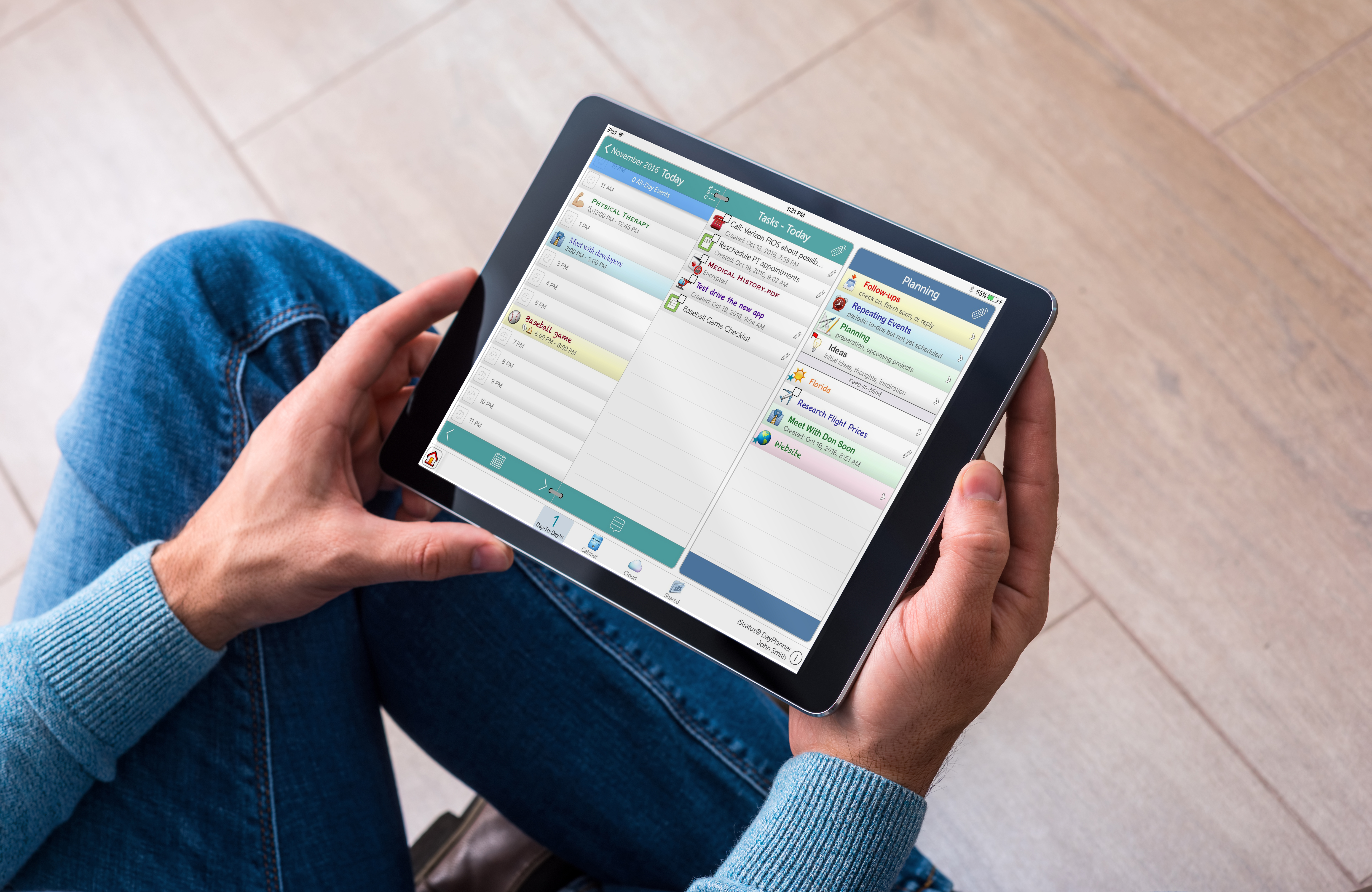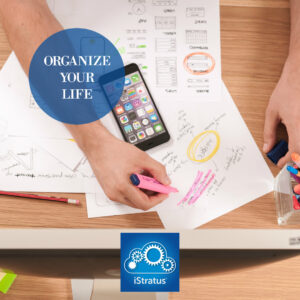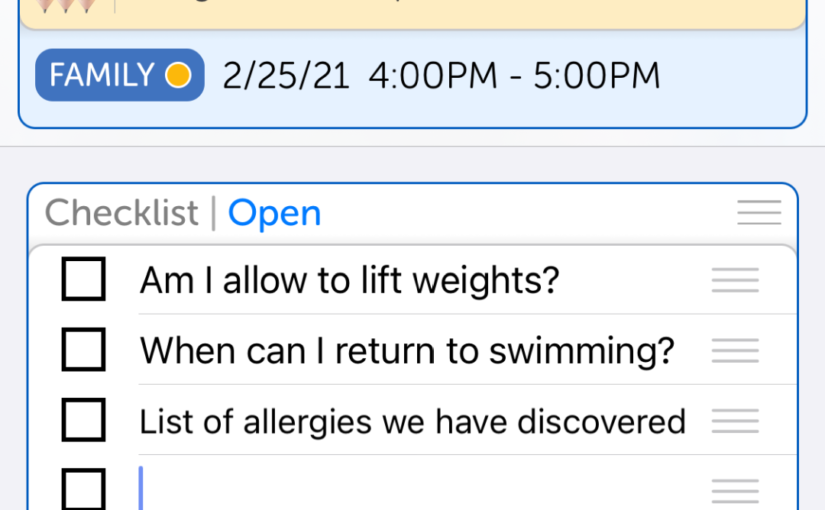Who knew a little yellow square could be SO resourceful?
Oh what an invaluable joy those little ‘sticky notes’ are for day planner organization and productivity!
So of course, we couldn’t resist diversifying their use to suit the electronic form, which we hope you’ll enjoy, just as much as the original.
Post-It (Note) in the “Daily-WS” Tab – And boom, your annotations, observations, and jotted thoughts are always there when you need them most. One of the best features of iStratus Pro is that you also have the option to add your own signature, date, and/or converting Post-Its to PDF.
Hallelujah! No more forgetting or “Ghosting” out little yellow squares. Those essential reminders or motivators are set and can be effortlessly exported or forwarded at the drop of a hat. Akin to a handy little pocket, you can simply drop biz into them wherever you go.
Why The “Sticky Note” Idea Works
We’ve mentioned it before; distractions are a major inhibitor of our ability to organize ourselves in our modern, notification-obsessed working world. The iStratus “Sticky Note” idea is your workspace best friend created to help you work faster and remain attentive towards the task at hand.
You may have once been bestowed the “World’s Best Multi-Tasker” Award in your home or office, however, in life’s experience, no one is truly flawless at multi-tasking.
When you think about it, this concept is really not an actual thing. What we’re really doing is constantly switching our minds from one task to the next. Every time you take a coffee break or tidy the kitchen (which you can’t stand looking at any longer because the kids left it like a bombsite) you’re forcing your brain to change gears.
Your brain cognitively resets this new information – and hello there, sluggish, brain drain that requires a reboot of its operating system.
Multiple University studies have concluded that you’re dropping the ball on at least 40 percent of your productivity by rapidly interchanging tasks.
Following distractions, it requires approximately 23 minutes to recoup the same level of in-depth concentration you had prior to dealing with that chocolate milk explosion in the kitchen.
In a world where productivity software reigns supreme, we realize, our attempt to digitize the sticky note, is a hard sell against the more popular original paper square.
Going From “Blah” To “How Did I Ever Survive Without This?!”
It’s not news, that what is deemed ‘normal’ now was initially difficult to adapt to, simply because “we’ve always done it this other way.” This something we say far too often. Electronic sticky notes are a classic example. It’s really not so different from the initial Post-It Note design idea, so “why not just stick with the paper ones?” (No pun intended).
We’re here to say, with some adjustment the process, will eventually go from “Blah” to “Wow. How did I EVER survive with this tool before now?!” Give it a shot – change is good from 1977.
They Do What?
Just think: When you’ve plastered a wall or whiteboard with sticky notes for productivity and development, the only way to record detail is with a photograph, which often goes nowhere in the abyss of your phone. iStratus already has your sticky notes covered:
- In an online environment that automatically recorded and ready for the next phase of any project. No need for a picture or time-consuming transcribing.
- Upon unlimited walls for jogging your memory. Electronic sticky notes remain exactly where you left them and you are able to access your spatial memory every time you open the App.
- With a direct, reportable commenting functions available. You can create Sticky Notes to record a discussion, or meeting minutes, saving time and energy.
- Saving trees! This is one of the best parts. The impact we have on the environment is very real. It’s important to question how much paper is truly required. A sticky note generally has a lifespan of a couple of hours, maybe four tops. Is all that paper really essential?
So while you may be stuck in the “we’ve always done it this way” mindset, sometimes all it takes is seeing the advantage of evolution with a little less hesitation.
“First comes thought; then organization of that thought, into ideas and plans; [followed by] transformation of those plans into reality. The beginning, as you will observe, is in your imagination.”
~ Napoleon Hill
Are You Ready To Stick To It?
The beauty of electronic sticky notes is their ease of use, and just like the original – their versatility enables them to cater to any system, which is why they are still a highly favored element for productivity. It’s not about being a fancy software tool, but a highly effective, useable one.
Hopefully, things will stick if you let them.









